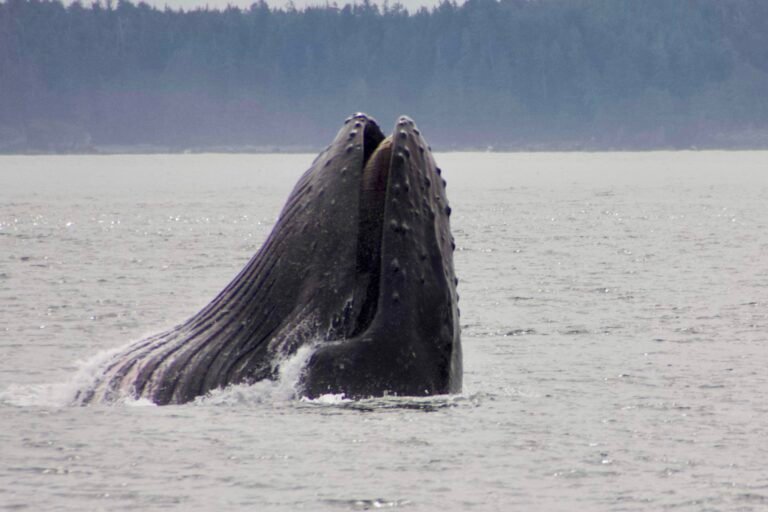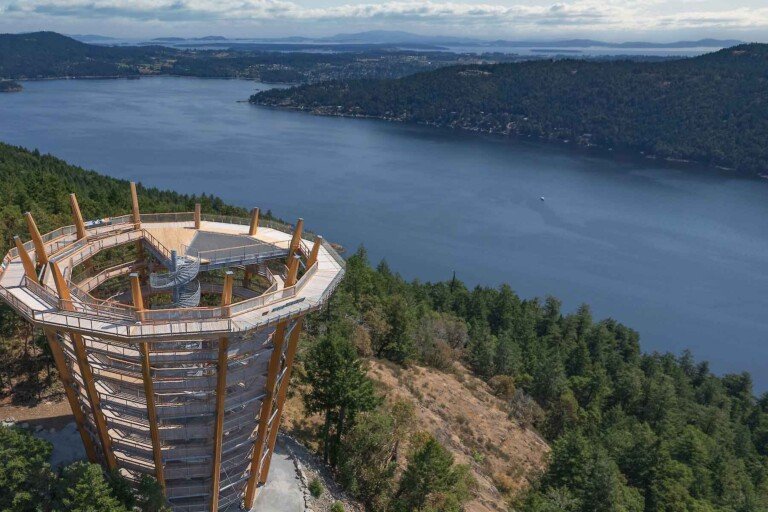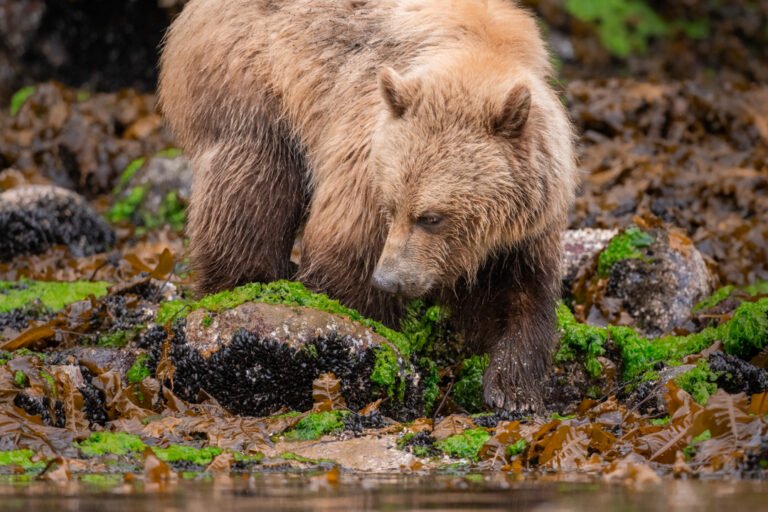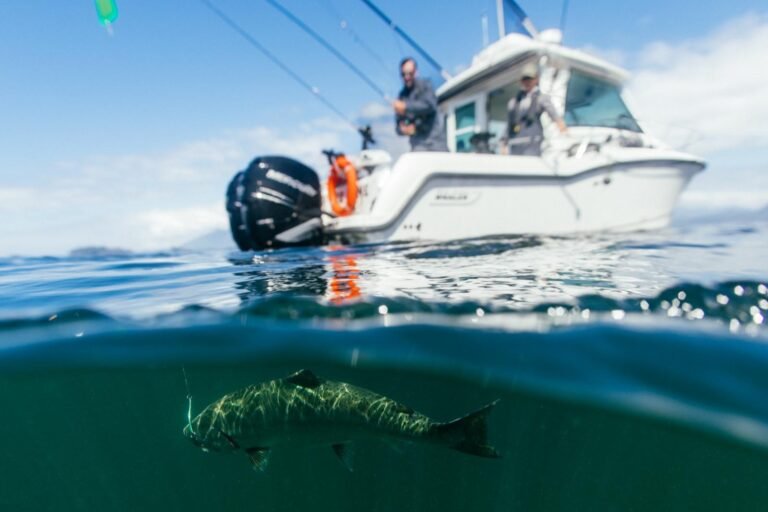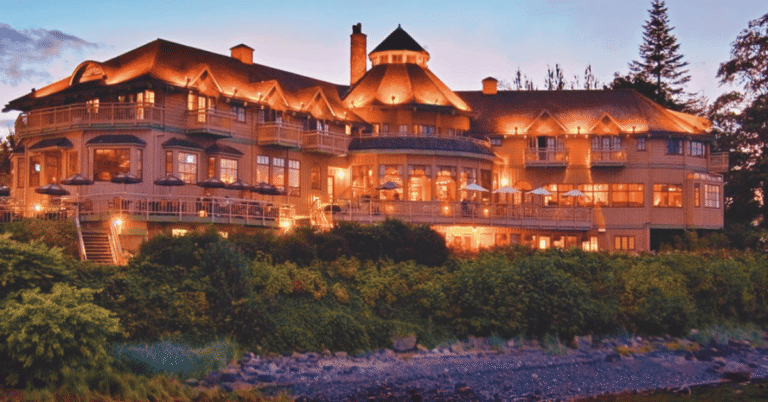Vancouver wouldn’t be half the city it is without its extensive roster of parks and gardens. Stanley Park is the centrepiece, one of the largest parks (1,000 acres/405 hectares) in any urban centre in North America. For many residents, the park is the heart that beats in the core of urbanity, the ecological holdout amid glass and concrete. Situated on a peninsula and surrounded on three sides by water, its popularity is both a blessing and a curse.
After all, Vancouver’s fame as one of the most beautiful cities in the world is tied to Stanley Park’s popularity. But visitors looking to get away from the madding crowd for a brief while will often find thousands of others in Stanley Park looking to do the same. It is not a refuge so much as a showcase for the natural beauty that surrounds the city, a quasi-wilderness for those who like nature to be well tended.
So firmly is love for Stanley Park rooted in the citizenry’s soul that in an annual survey carried out by the Georgia Straight, a free weekly paper, readers repeatedly choose the park as the best place in town to take a romantic stroll, watch the rain fall, experience bliss, have sex, break up, make up, and take visitors. It’s certainly got our vote as one of Vancouver’s best outdoor places to write about! As well, readers voted the park the best local tourist attraction, the second-best place to be in an earthquake, and the third-best place to get married.
What all this heady praise really testifies to is the park’s miraculous ability to absorb and reward visitors while being situated adjacent to the West End, one of the most densely populated neighbourhoods in North America. True, you will meet others as you make your way around the perimeter on the park’s 6.5-mile (10.5-km)-long seawall, or on the trails that cross through its dense rain-forest interior. Still, it’s the very best we offer.
Miles of wide gravel paths lead through the wilder sections of the park and around Beaver Lake and Lost Lagoon, resting places for hundreds of migratory birds such as Canada geese, swans, and ducks. Many enjoy the park’s ambience so much that, once here, they never leave. The park is also home to large populations of raccoons, squirrels, skunks, and coyotes. The raccoons and squirrels are used to the large crowds of people and habituated to handouts, despite numerous notices that warn visitors not to feed the animals.
Height is not Stanley Park’s long suit. Prospect Point is a mere 210 feet (64 m) above sea level, so expect an easy go of it along the majority of paths and trails. Even the most fleet-footed, intrepid explorer will need at least a day to see everything the park has to offer. If possible, time your visit for earlier or later in the day, particularly on hot summer weekends. You’ll find far fewer people in the park at these off-peak times. As well, begin exploring from some of the more remote areas of the park, such as the segment of the seawall to the east of the Lions Gate Bridge near Prospect Point. (If you arrive by car, you’ll find ample roadside parking here.) Walk west to Third Beach on the seawall, then back to Prospect Point following the well-marked forest trails (on the way back, watch for a giant hollow red cedar 56 feet/17 m around). The views of the inner and outer harbour and the North Shore are superb along this section. As you pass under the bridge, look up at the orderly columns of volcanic basalt on the hillside of Prospect Point, rising sharply above. This is a reminder of the region’s turbulent past at the end of the most recent ice age, about 10,000 years ago. Small distance markers along the seawall keep you posted on your progress.
Lions Gate Bridge (kilometre 5) is approximately the halfway point around the park’s perimeter. Other markers to watch for between here and Third Beach include the final stone that completed construction of the seawall on September 26, 1971. A plaque affixed to the hillside near Siwash Rock honours James Cunningham, the single-minded master mason who dedicated 32 years of his life to the construction of the seawall from 1931 until his retirement in 1963. Numerous park benches along the seawall provide places to rest and enjoy the views. Occasionally, a harbour seal will haul up on one of the nearby rocks and sit as still as a piece of sculpture.
Although there are dozens of places where the seawall can be accessed around the rim of the park, if you’re exploring by bike or on in-line skates, you should begin at the southeast corner of the park off Georgia St. Because of the popularity and the sheer number of people who go forth around the Stanley Park seawall’s 10.5-km pathway, bike and in-line skate circulation is restricted to a counterclockwise direction. The seawall has many points of interest along the way, including Deadman’s Island, the Nine O’clock Gun (whose loud report can be heard throughout much of the city), the Brockton Point Lighthouse, the Girl in a Wet Suit sculpture, the Empress of Japan figurehead, Prospect Point, and Siwash Rock, an offshore monolith that the Squamish people who once lived in Stanley Park believe to be a symbol of ‘clean fatherhood.’
A Squamish legend, told to Mohawk poet Pauline Johnson-Tekahionwake by Chief Joe Capilano in the early years of the 20th century, has it that a young chief and his wife came to Prospect Point for the birth of their child. In order to be clean and vicariously impart purity to their baby, the couple went swimming in the ocean. Custom deemed that only when they were so clean that wild animals could not detect their scent were they fit to be parents. When the mother went ashore to give birth, her husband remained in the water. As the chief continued to swim, a canoe with four supernatural giants (the Transformers, emissaries of Tyee, the Creator) came upon him. When asked to move out of their way, the chief refused for the sake of his unborn child. The four, who were impressed by the chief’s fearless commitment, transformed him into Siwash Rock to stand as a permanent example of ‘clean fatherhood.’ So that he not be separated from his wife and child, the Transformers changed them into two rocks, a larger one side-by-side with a smaller, which is in the forested hillside above Siwash Rock.
If you’d like to clean up your act, the west side of the peninsula, from Siwash Rock to the southwest corner of the park at Denman St, features three popular ocean beaches. By midsummer the water is usually delightfully warm.
Typical of urban green spaces, Stanley Park is dotted with man-made attractions, including the Vancouver Aquarium, a pitch-and-putt golf course, tennis courts, aging totem poles at Brockton Point, as well as monuments to England’s Lord Stanley (for whom the park is named), Queen Victoria, and Scottish poet-laureate Robbie Burns, and a cairn that contains the ashes of legend-gatherer Pauline Johnson-Tekahionwake. Natural wonders include towering trees (Canada’s tallest bigleaf maple and red alder both grow within the park) and acres of well-kept gardens, including over 3,000 types of roses.
Bordering the south side of the park, particularly along Denman Street, is an area rife with coffee shops and bike and in-line-skates rental emporiums, occasionally all rolled into one! Among the major routes in the West End that lead directly to Stanley Park are Georgia, Robson, Nelson, and Davie Streets, and Beach Avenue.
By car, the park is best reached from either Georgia Street or Beach Avenue, though finding parking once you get there is often more challenging than it’s worth. One alternative is to catch the #35/135 and #23/123 bus from Georgia Street that deposits riders at the entrance of Stanley Park and connects with the Stanley Park Shuttle Bus Service. The free Shuttle Bus Service starts in June and runs daily through to mid September from 10:00 a.m. until 6:30 p.m. This Park Board service allows visitors to explore the park on a special fleet of buses offering frequent (every 15 minutes) pick up service. The Stanley Park Shuttle has 14 specially signed stops hitting the park’s most popular attractions and natural highlights. It takes about 45 minutes to make an entire circuit of Stanley Park and each shuttle bus is wheelchair accessible. The Shuttle Bus Service start from the Miniature Railway Parking Lot in the morning and the last shuttle of the day departs at 6:30 p.m. and makes one last circuit of the Park.
Nearby Regions & Towns
Park Notices


